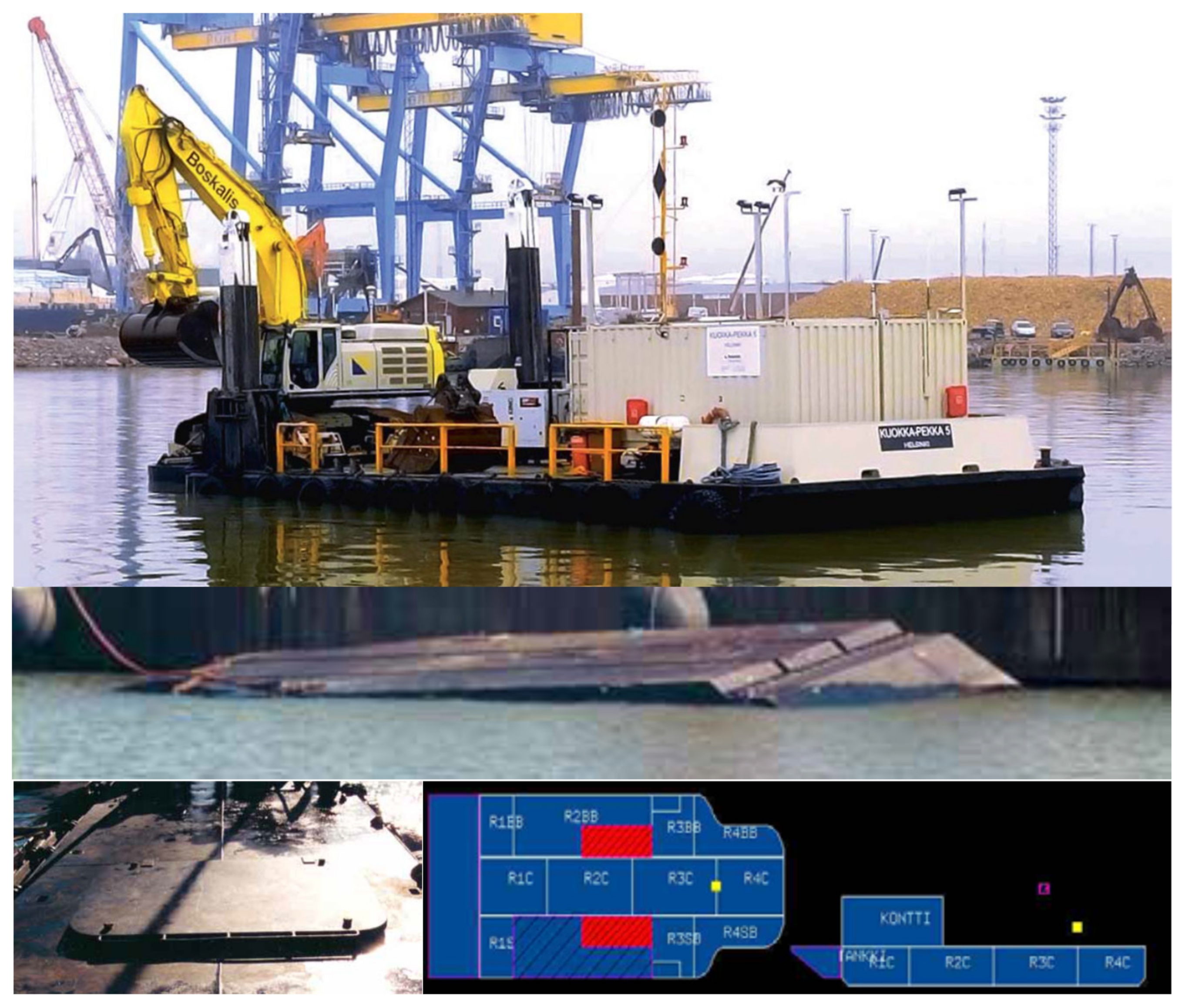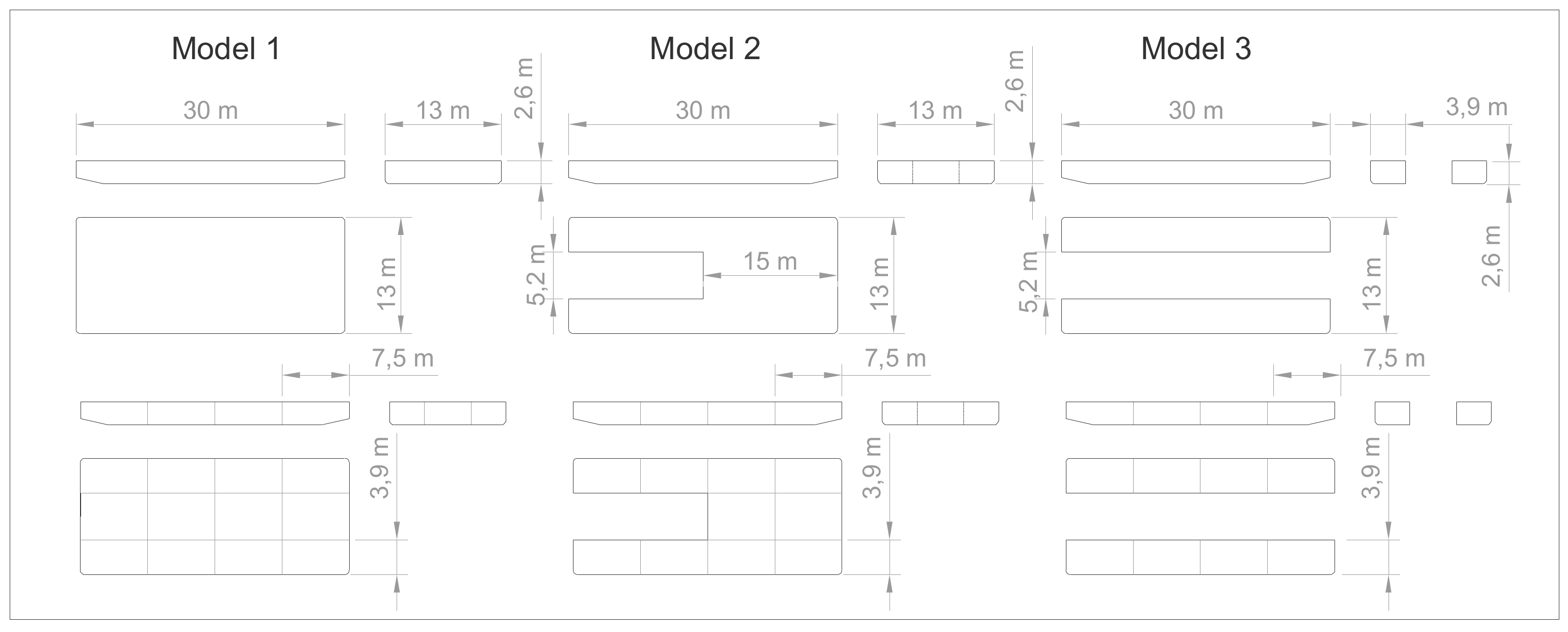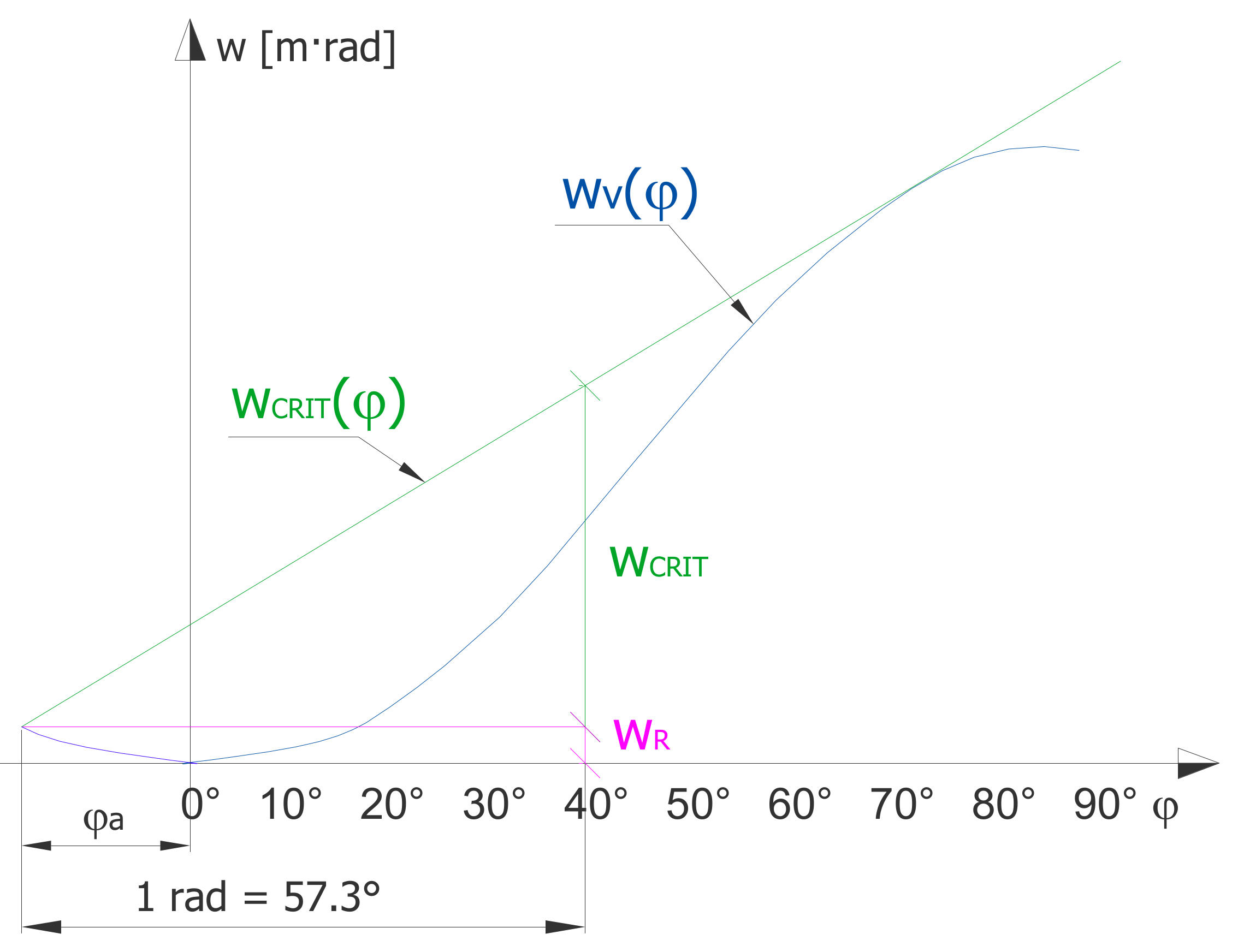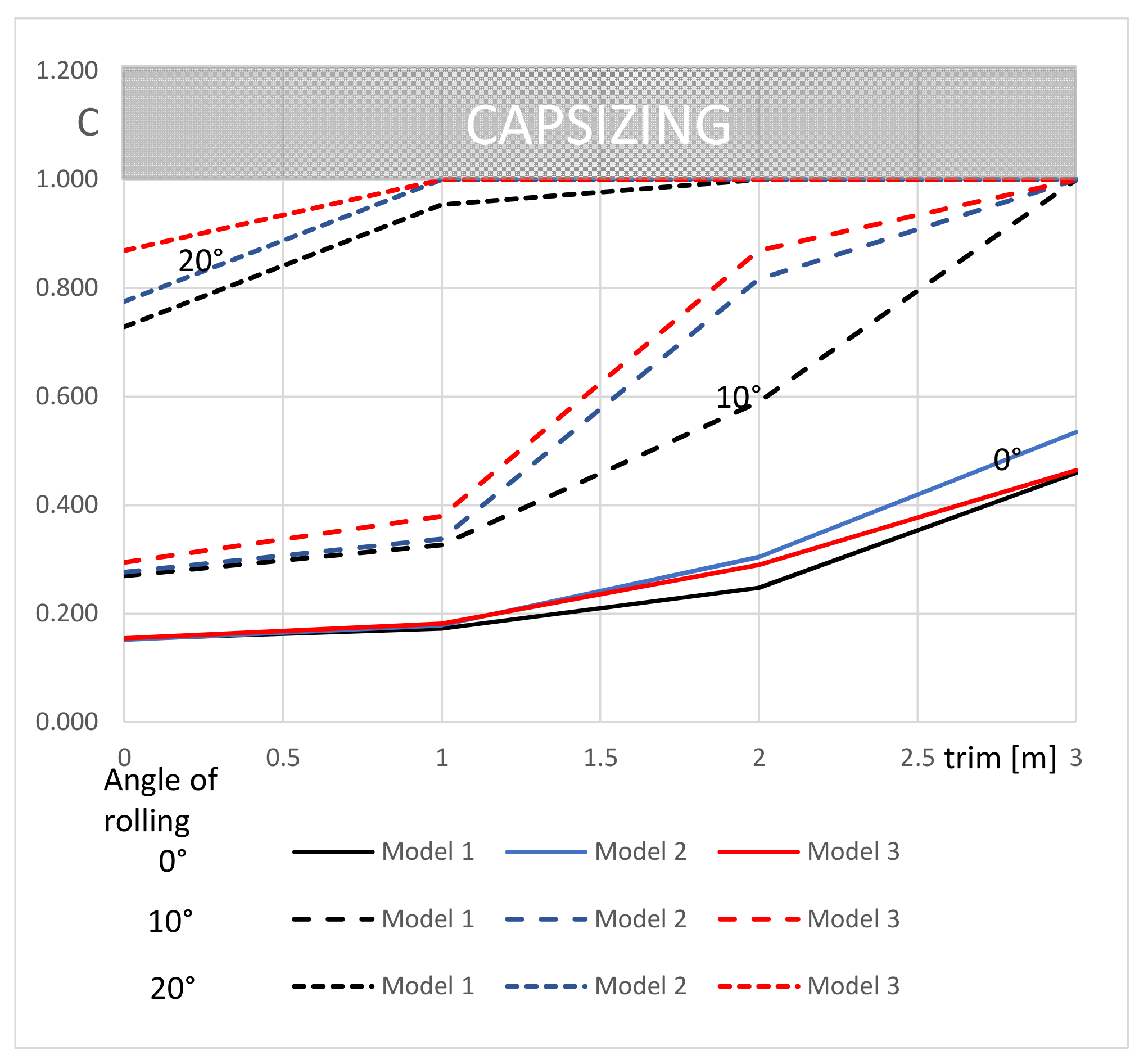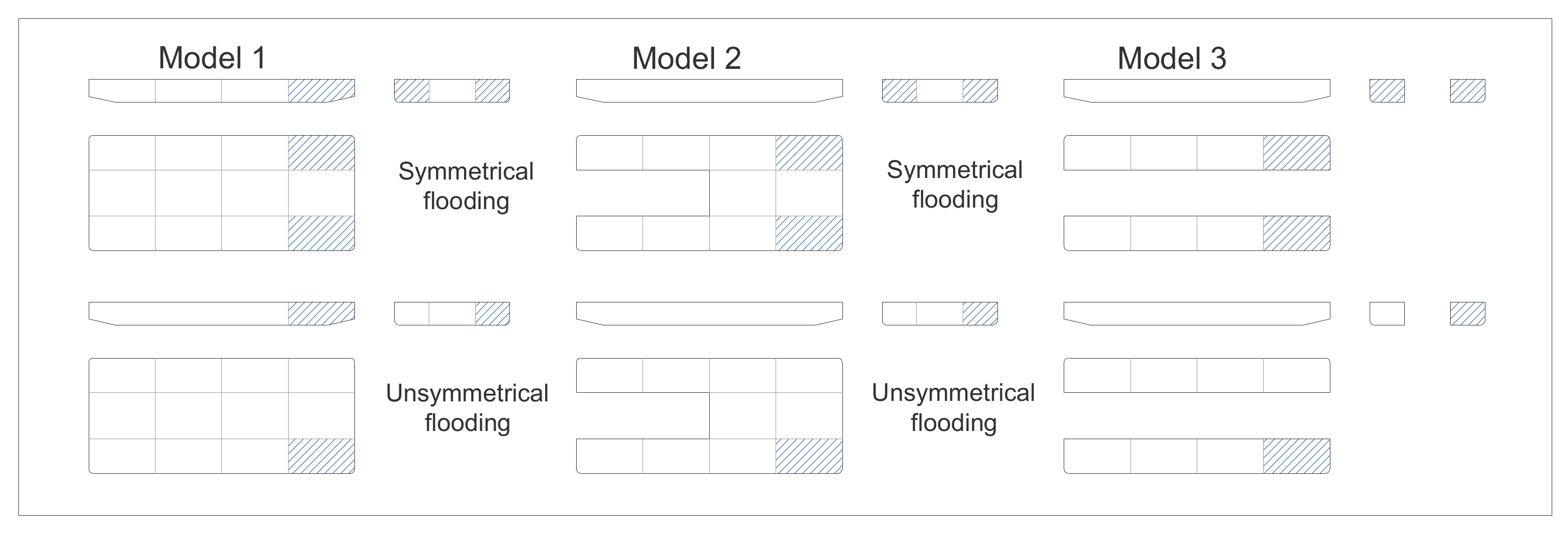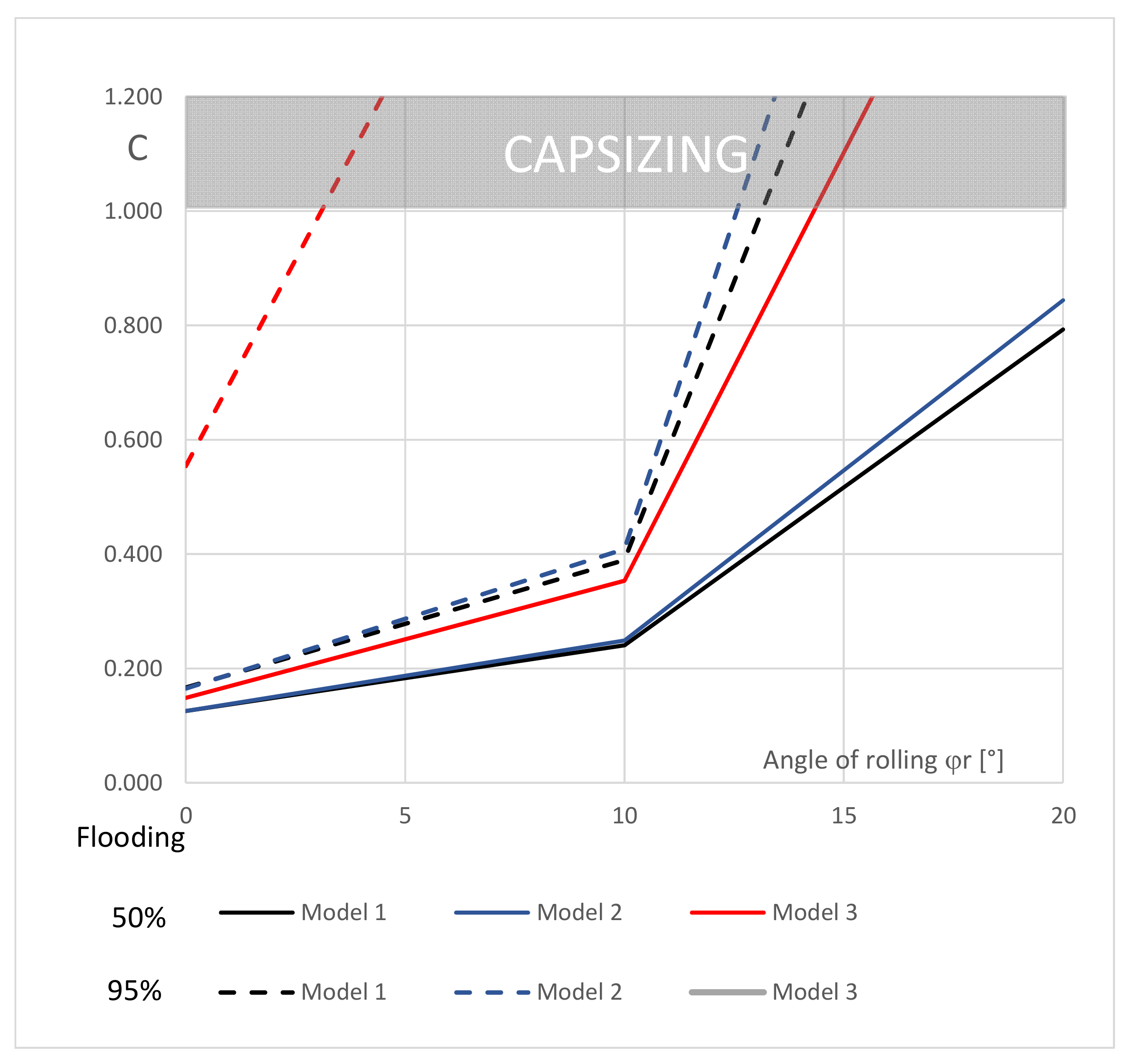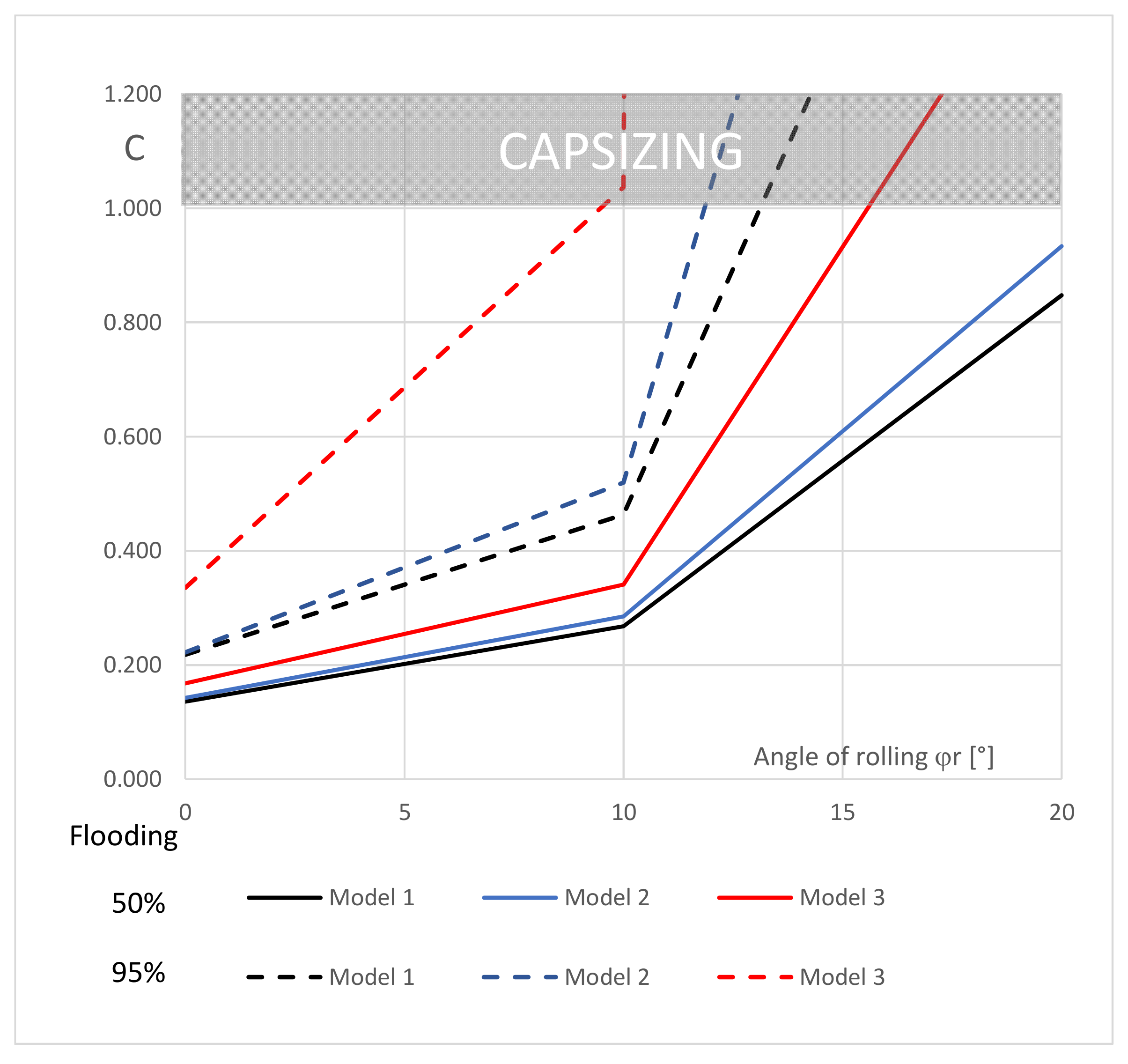To estimate the possibility of the dredger capsizing during sea towing, three models of vessels, similar to the currently used port dredgers, have been designed.
The analysis of the risk of capsizing concerns three characteristic hulls of dredgers with equal primary dimensions, differing in the hull structure (
Figure 3). Dredgers were divided into watertight compartments with identical dimensions for each model [
18]. The hull shape of dredgers is similar to the capsized dredgers “Kuokka Pekka 5”—model 1 (
Figure 4)—and Rozgwiazda”—model 2 (
Figure 5). Model 3 (
Figure 6) is based on existing harbor dredgers. The simulation analysis was carried out for a model similar to the dredgers actually used by PRCIP company in Polish harbors. The shapes and dimensions of the models have been simplified in order to compare the obtained results (
Table 2 and
Table 3).
4.2. Simulation of Watercraft Capsizing
In order to assess the stability of the dredgers, an analysis of the threats that may lead to their capsizing during sea towing, has been carried out. The PolyCAD software was used for stability simulation. The simulation was carried out on the basis of the results of the stability parameters without reference to the transition time between the successive phases of the incident. The threats which have been considered in the study include:
static heeling moments caused by the action of the tow and the wind;
dynamic heeling moments caused by the action of the tow and the wind, together with vessel pitching;
asymmetric flooding of watertight compartments of the vessel.
Dynamic overturning arms have been defined as the work required to overturn a craft per one ton of its mass (
Figure 7).
The work obtained by the vessel (wR) in the form of initial rolling was determined for the assumed angle of heel (φa).
External heeling moments that could cause the capsizing of the vessel are:
While conducting the analysis, the most dangerous situation of such moments, i.e., perpendicular to the watercraft’s side, was taken into consideration.
The maximum heeling moment due to tow jerk is determined from the formula:
where
FT—bollard pull force, FT = 100 kN;
zT—vertical distance of tow hitch from the waterline, zT = 2.00 m;
α—vertical angle angle of the tow, α = 0°.
Work of the heeling moment due to the tow jerk per one ton of vessel mass:
The bollard pull value for the tug was determined in reference to the minimum requirements for tugs in accordance with the DNVGL-ST-N001 Marine operations and marine warranty, par. 11.12.2 recommendations for the calculated towing resistance of vessels according to Holtrop–Menen method at a towing speed of 6 kn. The required bollard pull for the safe towing of the dredgers is 100 kN.
The maximum heeling moment, due to gust of wind, is determined from the formula:
where
PD—dynamic wind pressure, N/m
2;
v—wind speed, m/s;
ρA—density of air, kg/m3, ρA = 1.222 kg/m3;
cH—height coefficient (windage coefficient related to height), cH = 1.0;
cs—shape coefficient (windage coefficient related to the shape of the windage area), cs = 1.3;
AW—windage area, m2;
zW—distance from the windage area to the waterline, m;
g—acceleration due to gravity, m/s2.
In the simulation, the gusts of wind have been assumed to be 29 m/s (constant wind 8° Beaufort, v = 20.7 m/s, exceeding 40%).
Work of the heeling moment, due to the gust of wind, per one ton of vessel’s mass:
To determine the critical work values (
wCRIT), due to tow jerk and gust of wind, the following equation has been used:
where
wv—the work sufficient to capsize the ship, m·rad;
wR—work of ship’s initial rolling, m·rad;
wCRIT—work of the external dynamic heeling moment leading to the capsizing of the ship.
In order to standardize the calculations of the work needed to capsize the ship, a reference angle of 1 rad (57.3°) has been assumed. In this case, the value of the work is equal to the value of the dynamic tilting arm.
In order to determine the possibility of capsizing of the towed dredger, the critical event coefficient (
C), defined by the following formula, has been introduced:
If the
C coefficient is lower than 1.00, it means that the ship will survive the simultaneous phenomena of rolling, tow jerking and squall. However, reaching a value above one, indicates the capsizing of the ship (
Figure 8).
4.4. Simulation of Flooding of Watertight Compartments
In the dredger capsizing simulation, the phenomenon of unsealing of bow compartments, and their slow flooding, was analyzed (
Figure 9). Two variants of flooding of watertight compartments were analyzed (
Table 4):
symmetrical flooding up to 50% and 95% of the compartment capacity;
unsymmetrical flooding up to 50% and 95% of the right compartment capacity;
The same dimensions of watertight compartments have been assumed for all models.
The capsizing simulation includes the phenomenon of rolling and simultaneous jerk of the tow and the impact of the squall.
In the case of symmetrical flooding (
Table 5), flooding of watertight compartments up to 95% of their capacity causes a trim of about 1.00 m for bow in models 1 and 2. On the other hand, in the case of model 3 it is 1.60 m. With increasing trim, the stability parameters of vessels decrease (
Figure 10). What is more, when the rolling is greater than 13°, in the case of models 1 and 2, the impact of wind and the jerk of the tow may cause the watercraft to capsize. On the other hand, in the case of model 3 this may occur with the rolling of approx. 3°.
In the case of unsymmetrical flooding (
Table 6), the flooding of a watertight compartment up to 95% of its capacity, causes heels of about 4° (
Figure 11). The capsizing of the vessel 1 and 2 occurs at a rolling of 12°–13°. On the other hand, the capsizing of the vessel 3 is possible at 10°.
